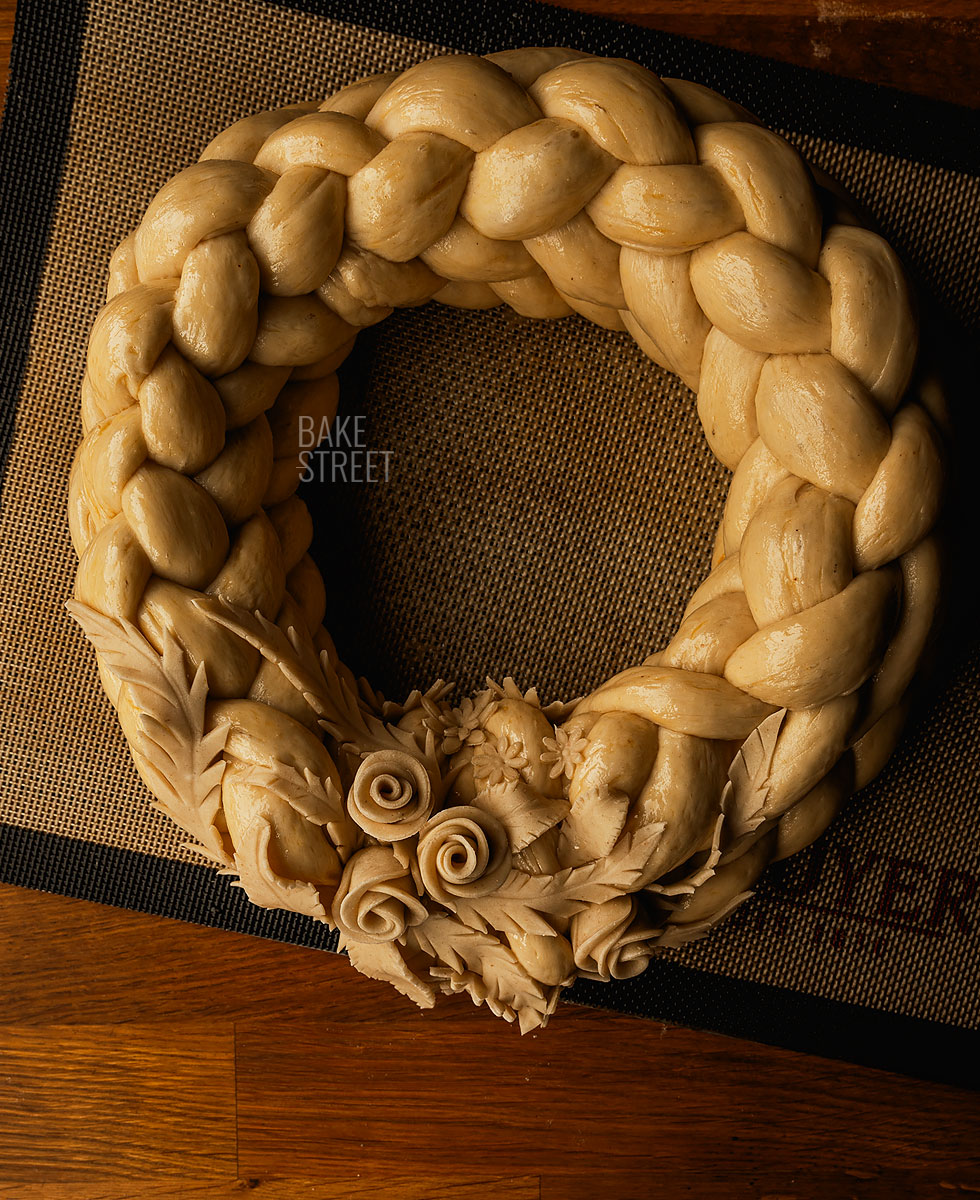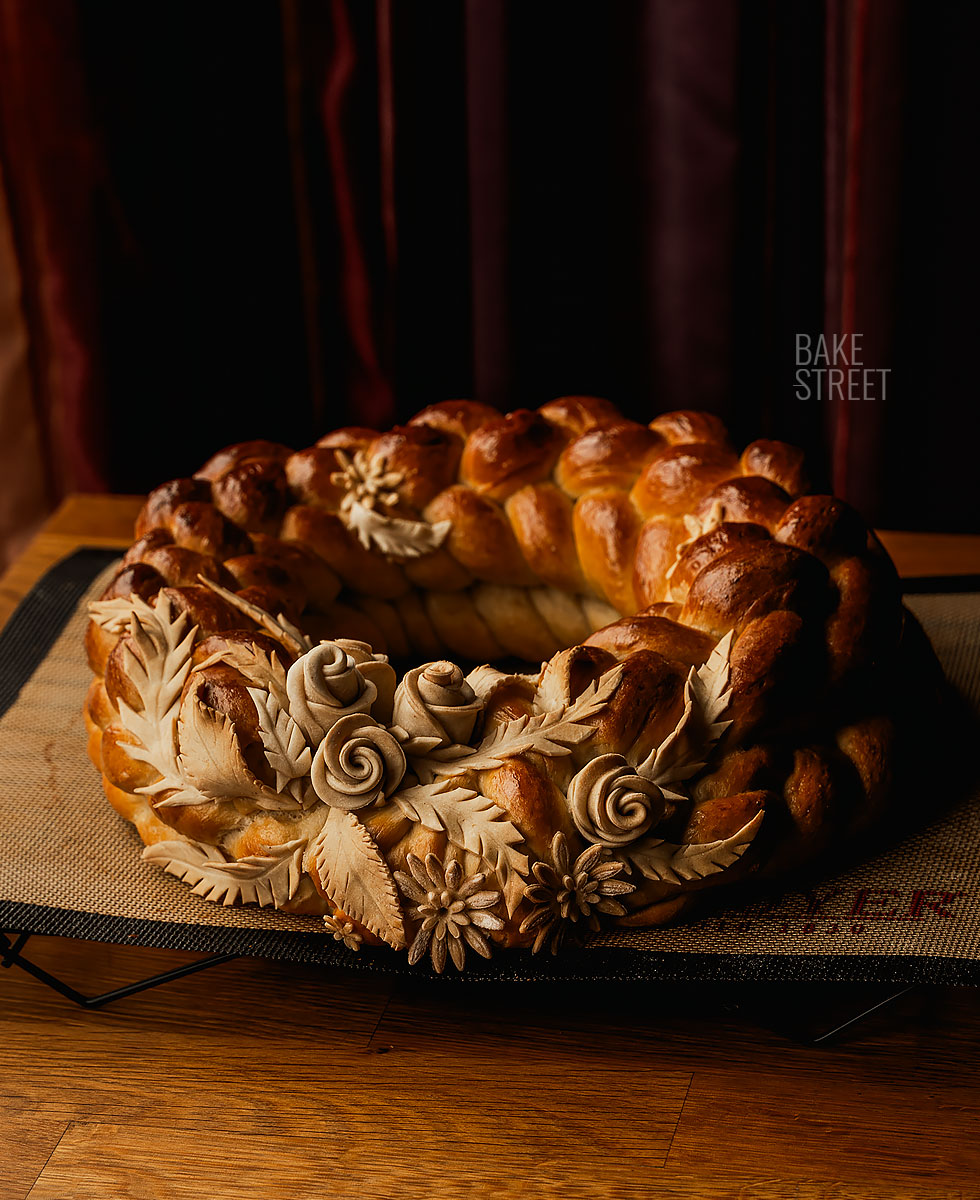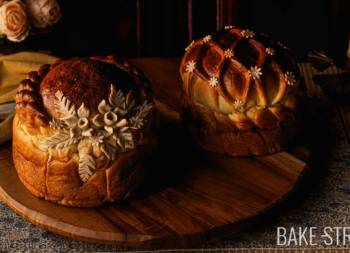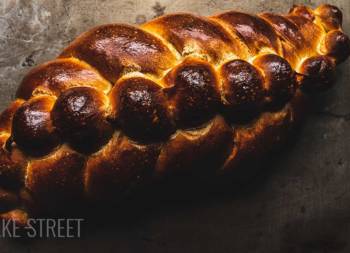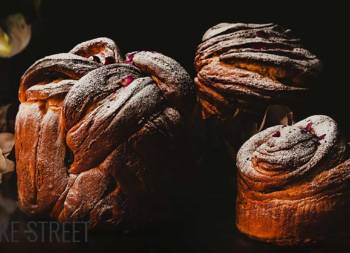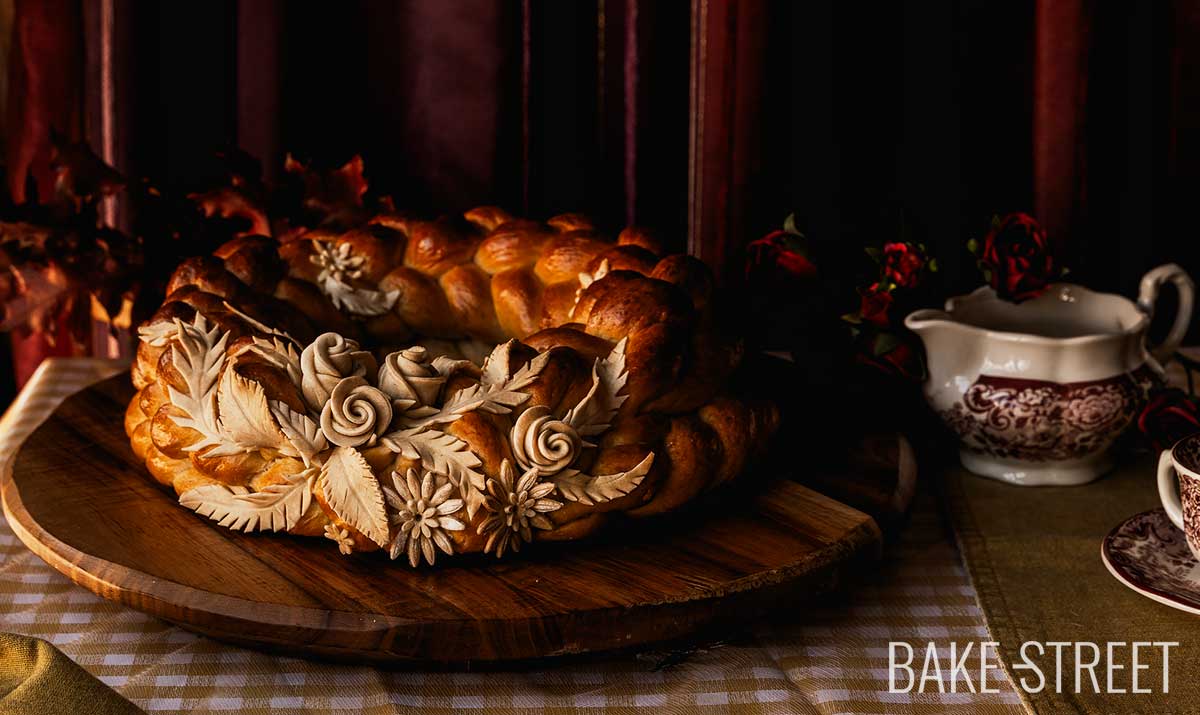
Colac Moldovenesc – Moldavian sweet bread
I can confirm that when I get the urge to make something, I go into a spiral of excitement and search for similar recipes that I find it hard to get out of. After leaving you last week with the recipe for Slavski kolač – Serbian Ceremonial Slava Bread, I couldn’t help but share with you how to make Colac Moldovenesc – Moldavian sweet bread. I’ve always been in love with dough, but there are seasons in our lives that we focus on other things and, without realizing it, we leave others aside.
Now that we have a few days of rest, among many other things, we can dedicate it to pamper our family with elaborations like this one. We enjoy the process and they, along with us of course, the final result.
What a wonderful discovery it has been for me the combination of a tender and spongy dough, together with decorations of dead dough or pâte morte. A long time ago I left you a pumpkin bread with decorations made with this dough, but I had never thought about the possibility of baking both types of dough at the same time and creating a decorative piece like this one. I’m in love with them!
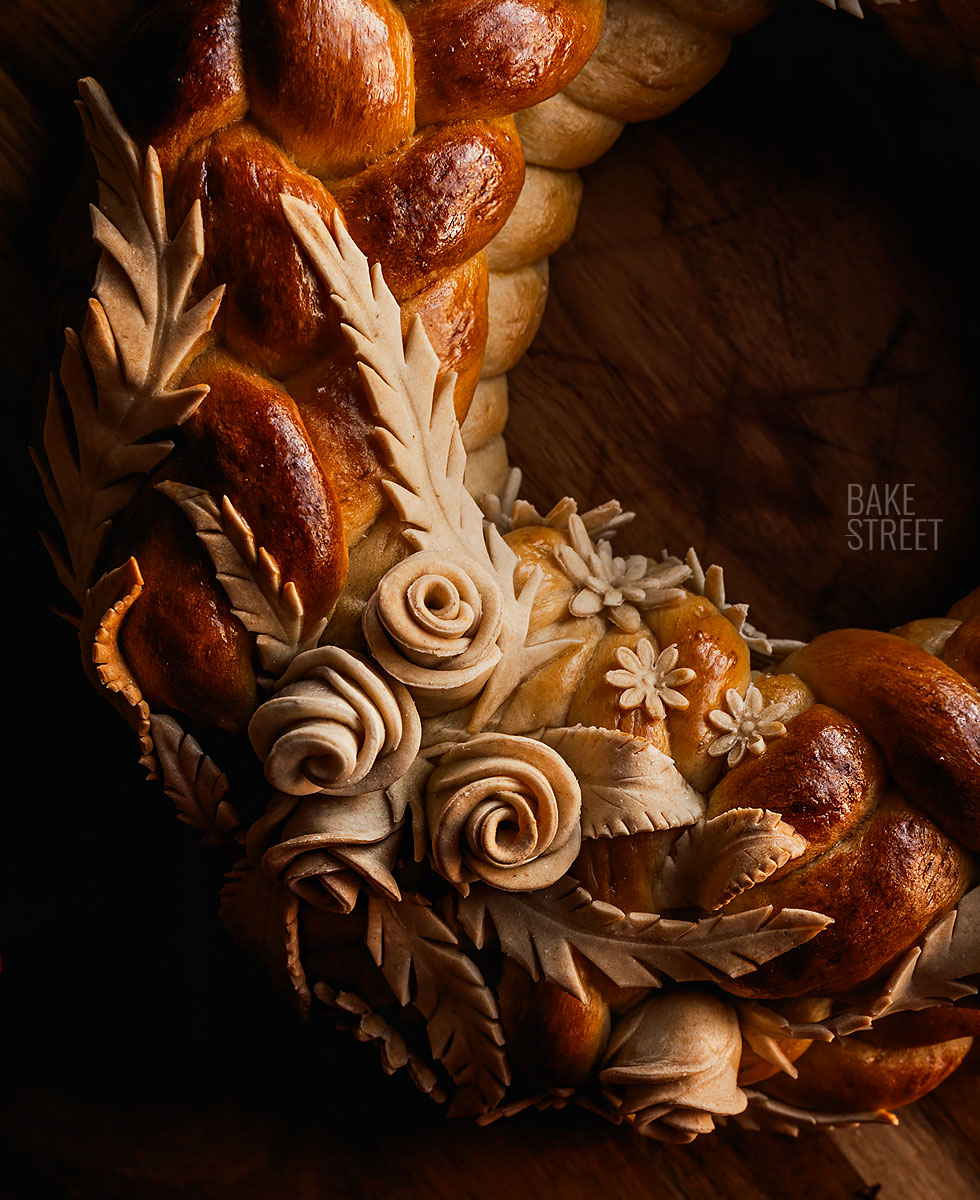
Colac Moldovenesc origin.
Colac Moldovenesc is a traditional bread from Moldova, a region located in Eastern Europe, part of historical Moldova and and is located between Romania and Ukraine. This Moldovan sweet bread has a long history dating back to the ancient culinary traditions of the region.
It is especially known for its preparation during religious holidays, such as Orthodox Easter, although it is also prepared during other important celebrations. It has a deep symbolic meaning in Moldavian culture and is considered a fundamental element of festive and ceremonial tables.
It is believed to have its origins in pre-Christian pagan traditions, where a round bread was made as a symbol of the sun and fertility. With the arrival of Christianity, the colac moldovenesc acquired a new religious significance. It became a symbol of Christ’s crown of thorns and was used in religious ceremonies such as Christmas and Easter.
The exact origin of Colac Moldovenesc and its creator is complex to determine precisely due to the antiquity of this culinary tradition of Moldovan gastronomy. It is presumed that this creation has been handed down from generation to generation over the centuries as part of the local culinary traditions.
However, another type of braided sweet bread elaboration, similar to this one, is a form of bread that dates back several centuries and can be found in many cultures in Eastern and Central Europe.
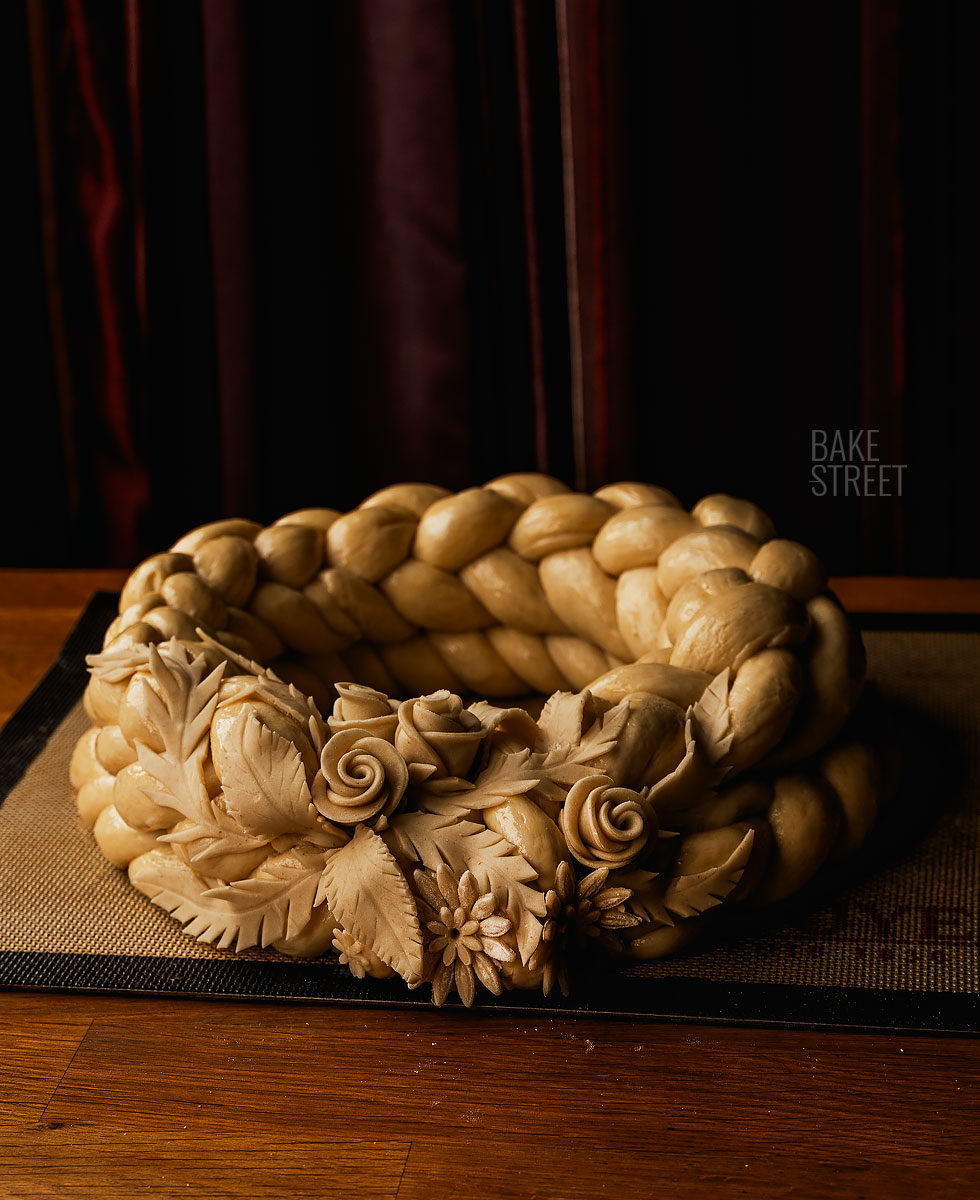
Bread braiding tradition.
The practice of braiding breads is believed to have originated in ancient times as a form of decoration and also as a practical method of baking and storing bread. Over time, these braided forms of bread became symbols of festivities and celebrations, and became associated with various religious and cultural traditions.
Once again, it is complex to determine at what time these types of breads, with braided forms, originated. It is a technique that undoubtedly could have been created simultaneously in different regions of the world and at different times of our existence.
Mesopotamia, Ancient Greece and Rome.
Some experts suggest that braided breads may have their origins in the ancient cultures of Mesopotamia, where decorative breads with intricate shapes were prepared.
Mesopotamia is considered the “ civilization’s cradle” for being the region where the first permanent human settlements developed, around 4000 B.C. The first settlers were the Sumerians, who founded the city of Uruk and then occupied the entire southern region of Mesopotamia.
Alongside the culture of Ancient Egypt, the Sumerians developed the first state societies. In Ancient Egypt, braided breads were found in Egyptian tombs dating back to 2000 BC.
Others point out that the tradition of braiding sweet breads could date back to Ancient Greece or Rome, where breads were made for special occasions and religious ceremonies such as the famous “koulourakia“.
In Europe, the braid on sweet bread has traditionally been associated with religious celebrations, such as Easter and Christmas. It has been passed down through generations in various cultures, including Slavic, Germanic and Scandinavian regions.
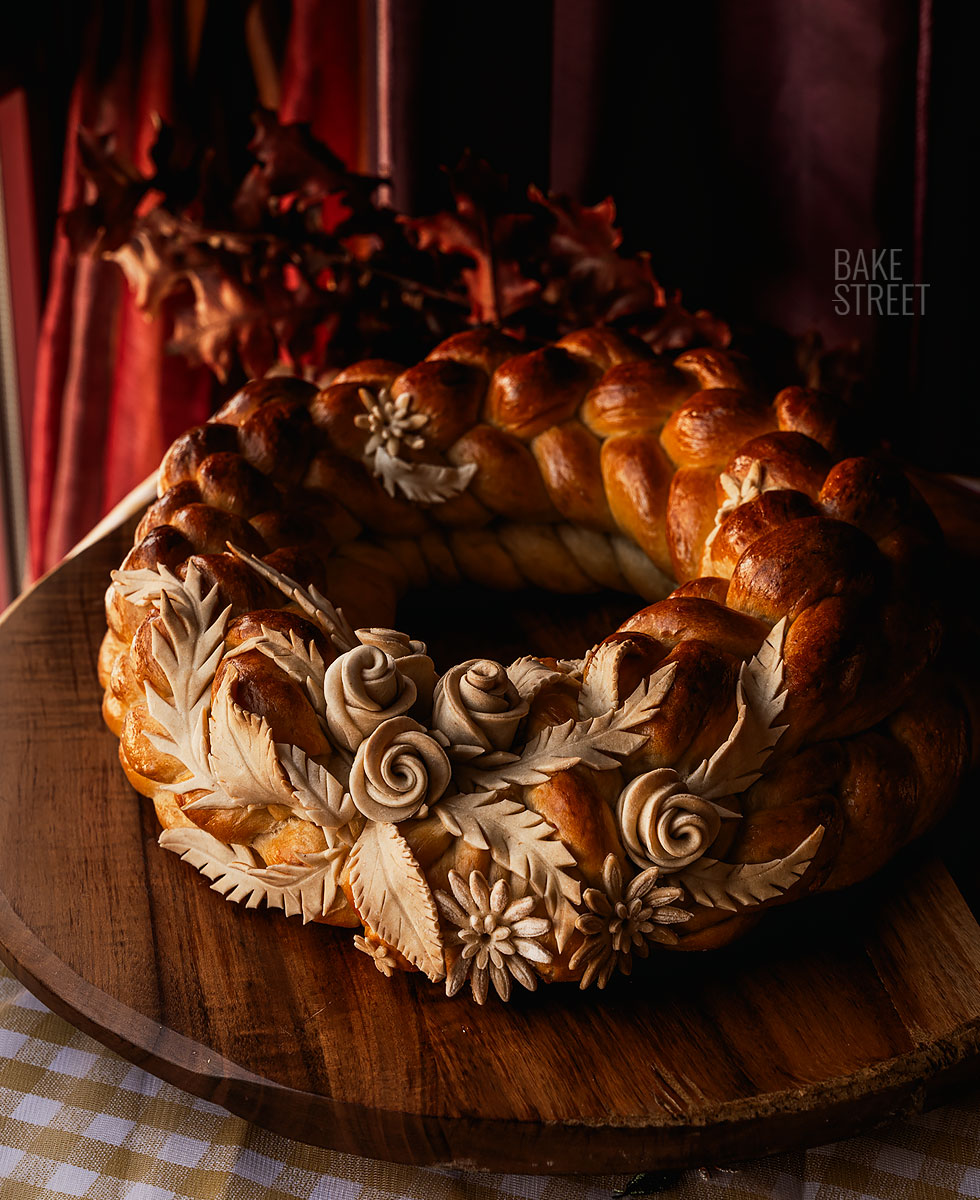
Symbology of Colac Moldovenesc.
This Moldavian sweet bread is made with a sweet dough that is then braided with several pieces that are given a circular shape. The braid can have different shapes and patterns, which often have a symbolic meaning.
Some of the most common symbols are:
- Three braids: Represent the Holy Trinity.
- Seven braids: Represent the seven days of creation.
- Nine braids: Represent the nine months of pregnancy.
As for decoration, it is usual to brush it with beaten egg so that it acquires a nice golden color and, usually, you can find pieces decorated with dead dough. This gives rise to really attractive pieces where we find a nice contrast of color and decorative motifs.
Colac moldovenesc is traditionally served on special occasions such as:
- Christmas: It is placed in the center of the table as a symbol of abundance and prosperity.
- Easter: It is used to bless the food during the celebration.
- Weddings: It is placed on the table as a symbol of the union of the bride and groom.
- Funerals: It is placed on the grave of the deceased as a symbol of mourning and remembrance.
In addition to its incredible flavor and texture, Colac Moldovenesc is imbued with cultural and religious significance. It is considered a symbol of family and community unity, as its preparation and consumption are often activities that bring the family together and strengthen the bonds between loved ones.
Recipe of the traditional Colac Moldovenesc.
This sweet bread dough, which is often enriched with ingredients such as eggs, milk, oil or butter and sugar, is a characteristic piece of Moldovan cuisine. The dough is braided, with one or several braids, in a circular shape, and often decorated with seeds, nuts or powdered sugar. We can also find many of these breads with decorations like the ones I leave you with, made of dead dough.
Recipe Colac Moldovenesc
I was inspired by Delicatese Ely and Tamara Reazanova to make this colac.
DOUGH:
- 865 g flour T45 or flour W=280-290 (maybe bread flour)
- 270 g water
- 15 g milk powder
- 12 g fresh yeast or 3 g dry yeast
- 175 g egg
- 60 g honey
- 120 g olive oil
- 12 g salt
WHITE DOUGH:
- 120 g AP flour
- 55-60 g water
- 1,5 g salt
FOR BRUSHING:
- 1 egg+ 1 Tbsp whole milk
MATERIAL WE WILL NEED AND SHOWN IN THE VIDEO:
- kneader or stand mixer
- container/large bowl (litre 6 capacity)
- scraper
- rolling pin
- perforated tray
- perforated mat
- flower cutters with and without ejector (these are mine)
- sharp knife
- pastry brush
- cooling rack
This post containes affiliated links.
Instructions
FIRST DAY
Prepare the dough.
- In the bowl of the kneader or stand mixer add the flour together with the eggs, milk powder, water, yeast, salt and honey. Knead at low speed for 5 minutes. You will obtain a semi-developed dough in which you will see that the ingredients are amalgamated.
- After this time, turn up to high speed and knead for 12 minutes.
- Stop the mixer and start adding the oil in two batches. Allow the oil to fully integrate into the dough before adding more. During the whole process of adding the oil, knead on low speed.
- Once everything has been added and incorporated, knead for 5 more minutes on low speed. The dough should be elastic, soft, smooth and not break.
- Let it rest in the bowl, covered with film or plastic wrap for 45 minutes.
- Take out the dough, fold it and put it into a bowl, previously greased with olive oil. Mine has a capacity of 6 liters.
- Store in the refrigerator for 12-24 hours. In my case it was 14 hours at 39,2ºF/4ºC.
- NOTE: When we use containers of different proportions, it is difficult to know what volume the dough acquires. I recommend you to take a small portion and put it into a shot glass (you can see this in this post). That way you will know exactly how much the dough has grown. The dough should quadruple its volume.
SECOND DAY
Prepare white dough for decoration.
- In a bowl, mix the flour with the water and salt. In my case I didn't add all the flour at once, I left a small amount reserved to achieve an amalgamated and developed dough and, in that way, favour the development of the gluten.
- Once you have a homogeneous dough, add the rest of the flour (I reserved about 30 g of flour).
- Turn out onto a clean work surface and knead. You should knead until you have a smooth, even and very soft finish.
- Cover with cling film and leave the dough to rest for 2 hours. This step will allow the gluten to relax and you will be able to work the dough later without any problems.
Shape Colac Moldovenesc.
- To form the braided bread, you need to prepare two different braids. The base is made with a braid of 5 strands and the upper braid is made with 6 strands.
- To form it, work the dough straight out of the refrigerator.
- Turn the dough out onto a work surface and degas. Attach the dough "snitch pice" to the large dough, if used.
- To form the lower braid, cut 5 pieces of 110 g. If it is possible to cut them elongated, great, otherwise, cut the dough, preform it into an elongated shape and let it rest, covered with film, for 10 minutes. After this time, form strands of approximately 90-100 cm.
- Form a 5-strand braid as shown in the video.
- Cut the ends and place the braid, creating a circular shape, on a perforated tray lined with a mat, silpat or Teflon. Cover with cling film to prevent it from drying out.
- Cut 6 pieces of 100 g each and form in the same way as above. Create 90-100 cm strands.
- Form a braid of 6 strands as shown in the video. Cut the ends of the braid to give it a cleaner finish.
- With the edge of your hands, sink the central part of the first braid.
- Place the braid, creating a circular shape, over the previous braid.
- Cover with film and let it ferment for the final fermentation. In my case it was 3 hours at 71,6ºF/22ºC. The piece should almost triple its volume. With the excess dough, I formed 2 pieces of 100 g each and placed them in individual brioche molds (10 cm in diameter).
Form the decorations with white dough.
- While the piece is making the final fermentation, form the decorations. In this step, let your imagination run wild.
- In my case, I formed small flowers, roses and leaves.
- To cut the pieces with the ejector cutters, I recommend flouring the mould beforehand so that the dough does not stick to it, as the flower or decoration will be deformed.

Bake.
- Preheat the oven to 356ºF/180ºC, heat up and down.
- Brush the piece with egg beaten with milk.
- Carefully place the decorations on the bread.
- Bake, placing the tray on the second rack starting from the bottom. The baking time will be 40-45 minutes. After 20-22 minutes of baking, I recommend covering the bread with aluminum foil to prevent it from browning too much.
- Remove from the oven and let cool completely on a wire rack.
- NOTE: I baked the small 100 g pieces in the brioche molds for 18 minutes. Remember that the internal temperature of each piece, large and small, must reach 190º-194ºF/88º-90ºC for the baking to be finished. I recommend that you control the internal temperature, so that you avoid overcooking and leaving dry breads.

Notes
- If you cannot find T45 flour, you can use a flour W=280-290 approximately, maybe bread flour, as a substitute. It is important to observe how the flour behaves as you add ingredients to see if it has sufficient absorption capacity. If you do not know the flour you are going to work with, add the milk little by little.
- You must be patient in the kneading process to obtain a good result in the development of the dough.
- You should work on forming the breads with the dough cold. This will facilitate the handling of the dough, especially the shaping.
- Respect all the steps, resting and rising times to obtain a good result in terms of flavour, texture and sponginess.

- I used brioche moulds with a diameter of 10 cm for the 100 g pieces.
- The white dough is very easy to shape. You can either use cutters or shape the pieces by hand.
- The base braid is very easy to do, but the top braid (at least in my case) was more complex to do. I recommend practicing before proceeding to braid the dough.
- While you braid the first braid, I recommend keeping the dough refrigerated to prevent it from rising too quickly at room temperature. If you prefer, you can form all the strands and keep them refrigerated while you braid the first braid.
- The white dough is very hard after baking. In my humble opinion, I think that their purpose is merely decorative and they should not be consumed.
- It is important that you carry out a good second fermentation, otherwise the dough will be forced to rise in the oven, which will result in deformed or cracked braids. In addition to shortening the shelf life of the piece and obtaining a denser or harder result.
- It will keep in perfect condition for 4-5 days if kept in a zip bag at room temperature or wrapped in plastic wrap.

During Holy Week or Easter, we can prepare an infinite number of elaborations, but without a doubt this Colac Moldovenesc is one of those that you can't miss.
It is true that the braiding can be somewhat tedious, for that reason in the video I have left you the whole process of braiding and without reproducing at higher speed. In my case, the second braid, it took me a while until I understood how to do it.
By the way, I remind you that you can watch all my videos on my YouTube channel. If you subscribe and turn on the little bell, I will be eternally grateful!
I wish you a wonderful Sunday afternoon and happy Easter!
Lots of love,
Eva
This post containes affiliated links.
